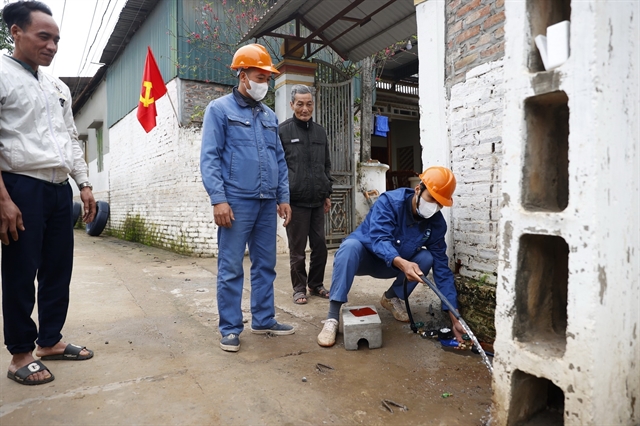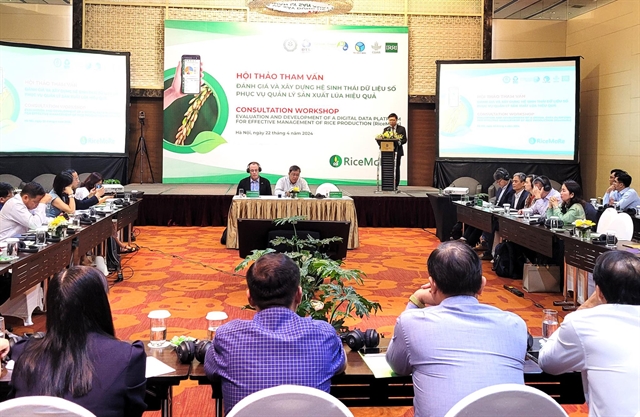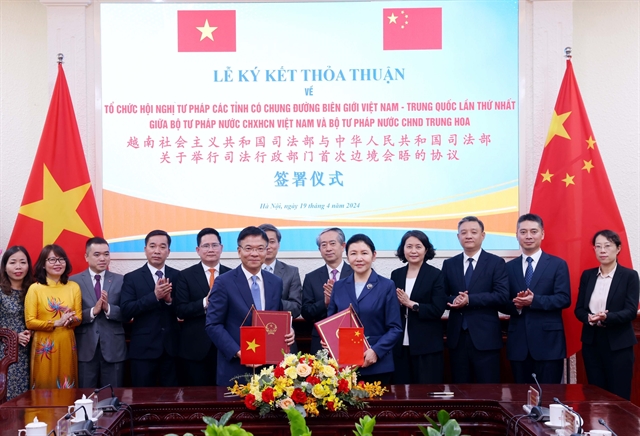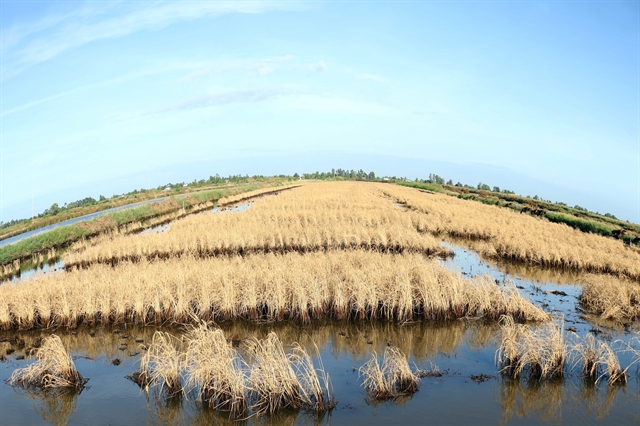 Business Beat
Business Beat
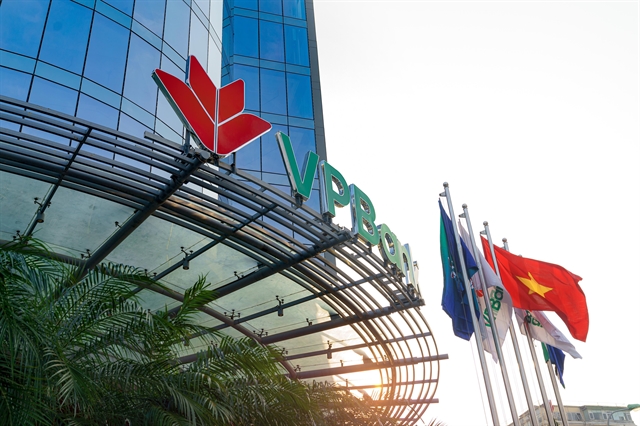
The Việt Nam Technological and Commercial Joint Stock Bank (Techcombank) will pick up a 49 per cent stake in VASCO after committing to inject VNĐ147 billion into the restructured carrier.
 |
| VASCO has been turned into a low-cost airline by its parent, Vietnam Airlines, which retains the remaining the 51 per cent share. — Photo airline.ee |
By Thien Ly
The Việt Nam Technological and Commercial Joint Stock Bank (Techcombank) will pick up a 49 per cent stake in VASCO after committing to inject VNĐ147 billion into the restructured carrier.
VASCO has been turned into a low-cost airline by its parent, Vietnam Airlines, which retains the remaining the 51 per cent share.
The airline has a charter capital of VNĐ300 billion (US$13.43 million) and around 10 aircraft.
This is not Techcombank’s first foray into the aviation sector. It became a shareholder in Vietnam Airlines when it picked up 25.76 million shares (1.82 per cent) in the carrier’s initial public offering in November 2014. State-owned Vietcombank bought a 1.6 per cent stake.
HDBank holds a 10 per cent stake in no-frills carrier Vietjet Air.
Global winds blowing into the Vietnamese aviation sector as a result of the country’s deeper integration has forced it to open up, and carriers have had to improve quickly and in all areas to survive. They have had to expand their fleets and diversify their services for which they needed large sums of money. This was where banks entered, sensing a tremendous opportunity to not only earn profits but also expand market share and promote their brands.
The co-operation has been in various forms like providing credit and financial services, payment guarantees, and co-branded credit and debit cards.
Techcombank and Vietcombank had even more reason to invest in Vietnam Airlines: Both have been providing banking services to the carrier for years and have enjoyed a long relationship with it.
Techcombank has been part of many consortia that provided syndicated loans to Vietnam Airlines to buy aircraft. In return, the bank offers the carrier and its passengers various services.
Vietcombank has also been lending to Vietnam Airlines besides providing capital management and domestic and overseas payment services and tying up for co-branded credit cards.
Since last April Vietcombank has also begun to provide this service to Vietjet Air.
PVcombank is another lender to offer air ticket payment services after tying up with Vietnam Airlines and Vietjet Air. The bank’s logo has appeared on Vietnam Airlines boarding passes since last month.
Explaining the attraction airlines have for them, the banks said they do not pick up the stakes just to make profits, but because of other long-term benefits.
In fact, airlines’margins are low, but the banks also earn incomes through services it provides the airlines and their customers and tie-ups under which the carriers’ employees’ salaries are paid through them.
Analysts said the aviation sector is attractive for investors, but in the past banks and other investors could not get a share of this pie since it used to be the monopoly of State-owned firms.
In recent years the aviation sector has also moved towards equitisation like most others, making the playing field a bit more level for investors.
The strong growth in aviation in recent years -- turnover rose by 129 per cent last year – is the icing on the cake for the banks and other investors.
But some point out that, the huge potential notwithstanding, the investments are not without their risks, citing the example of now defunct carriers like Air Mekong and Indochina Air.
Seafood imports up, exports down
The fisheries sector is faced with a paradox: while imports of raw seafood to process for exports are booming, exports themselves are modest.
The question is, what has caused this?
Since 1986 the government has focused on an export-led approach for the seafood industry, which gradually reformed the market and made seafood one of the country’s key export earners.
In reality, the fishery sector has played an important role in the national economy, accounting for about 4 percent of Gross Domestic Product (GDP) and about 8 percent of national export revenue over last five years.
The bulk of Việt Nam’s fishery exports are bound for Japan, Taiwan, South Korea, Hong Kong, the United States and the European Union. With a 24-fold increase in fishery exports since the 1990s, the country now ranks among the top 10 seafood exporters in the world.
According to the Việt Nam Association of Seafood Exporters and Producers (VASEP), the country’s most important fisheries products are shrimp, pangasius, tuna, and marine fish. Shrimp, unarguably the most important of the above products, accounted for more than 50 percent of the industry’s exports.
But the industry has not always boasted such results due to many reasons, one of which is the shortage of raw materials.
With a 3000km coastline and a myriad of rivers and other water bodies, Việt Nam is in an ideal position to have a strong seafood industry comprising both aquaculture and marine fisheries.
The Government is implementing a five-year plan, to be wrapped up in 2020, to boost investment and build major fishing centres in five locations -- Hải Phòng, Đà Nẵng, Khánh Hòa, Bà Rịa – Vũng Tàu, and Kiên Giang – that are close to traditional fishing grounds.
But meanwhile large volumes of raw fish and other creatures have to be imported for processing for export.
The General Department of Customs said last year imports of raw shrimp cost US$426 million, or 40 per cent of total fisheries imports, while tuna cost $215 million.
But even as exports fell 14.3 per cent to just $6.72 billion, imports remained strong at $1 billion, marginally up from the previous year’s figure.
According to a spokesperson for the Việt Nam Tuna Association, though the country has more than 3,600 tuna-fishing vessels that catch around 17,000 tonnes a year, processors still import 4,000-5,000 tonnes to meet export demand.
The domestic tuna fishing industry is also plagued by poor fish quality and big post-catch losses.
Fishing grounds are too distant and fishing practices backward (mostly hand fishing using lights), meaning the tuna caught in Việt Nam cannot be processed into value-added export products like sushi.
The high price of the fish is another reason for processors to look to imports.
According to VASEP, last year the prices of raw shrimp imported from India were often lower than that of the local catch, sometimes by up to $2 a kilogramme. India thus accounted for almost 75 per cent of the country’s shrimp imports.
The shortage of raw materials also plagued the tra fish industry, resulting in Vietnamese exports going to just three countries from the earlier 80.
Analysts warn that the shortage of raw materials for fisheries processing is likely to be exacerbated this year since export demand is expected to rise thanks to the many free trade agreements that have taken or will take effect.
Thus, imports are most likely to increase. Shrimp shipments, for instance, are predicted to jump by 10 per cent to $470 million.
The increasing imports of raw seafood have cut sharply into Vietnamese seafood exporters’ profits due to high costs.
Analysts also warned that this reliance on imports would have a detrimental effect on the domestic fisheries sector. — VNS

